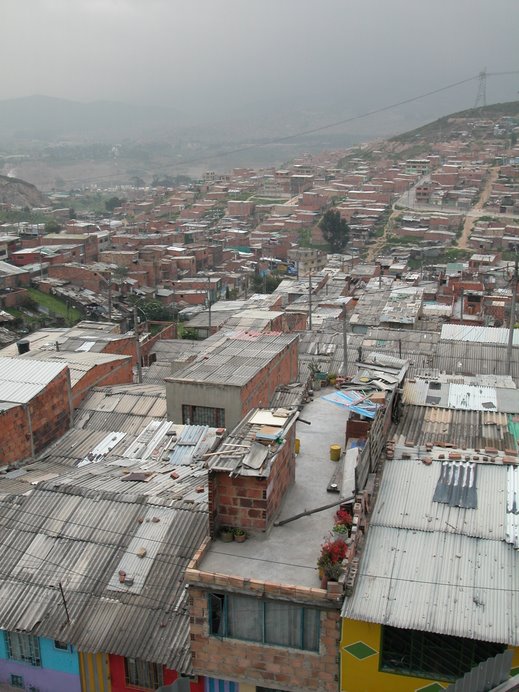 |
| The empty mausoleums along 26th Street, with their stencils commemorating the conflict's victims. |
 |
| Does anybody notice? Drivers pass the mausoleums decorated by Gonzalez. |
The thousands of images are the work of artists Beatriz Gonzalez and a partner and provide a
haunting reminder of Colombia's violence, in particular the victims of the 1948 Bogotazo riots...for those who notice them. My impression is that few do, (despite enforced viewing from Calle 26's chronic traffic jams), and even fewer pay attention.
Gonzalez is now fighting to preserve the artwork in the face of city plans to create a park in the old block of the Central Cemetery.
 |
| The stencils of the discord. |
And, if the city does the sensible thing by using part of the land for recreation while preserving one of the mausoleums, with explanatory information, lots more people would see the memorial and we might have fewer murders to lament.
The situation strikes me as absurd. But not nearly as absurd as the land across the street and the other a few blocks west by the Jaime Garzon mural, which could be nice public parks if the city did not fence them off with barbed wire. Go figger.
Mike Ceaser, of Bogotá Bike Tours






















































